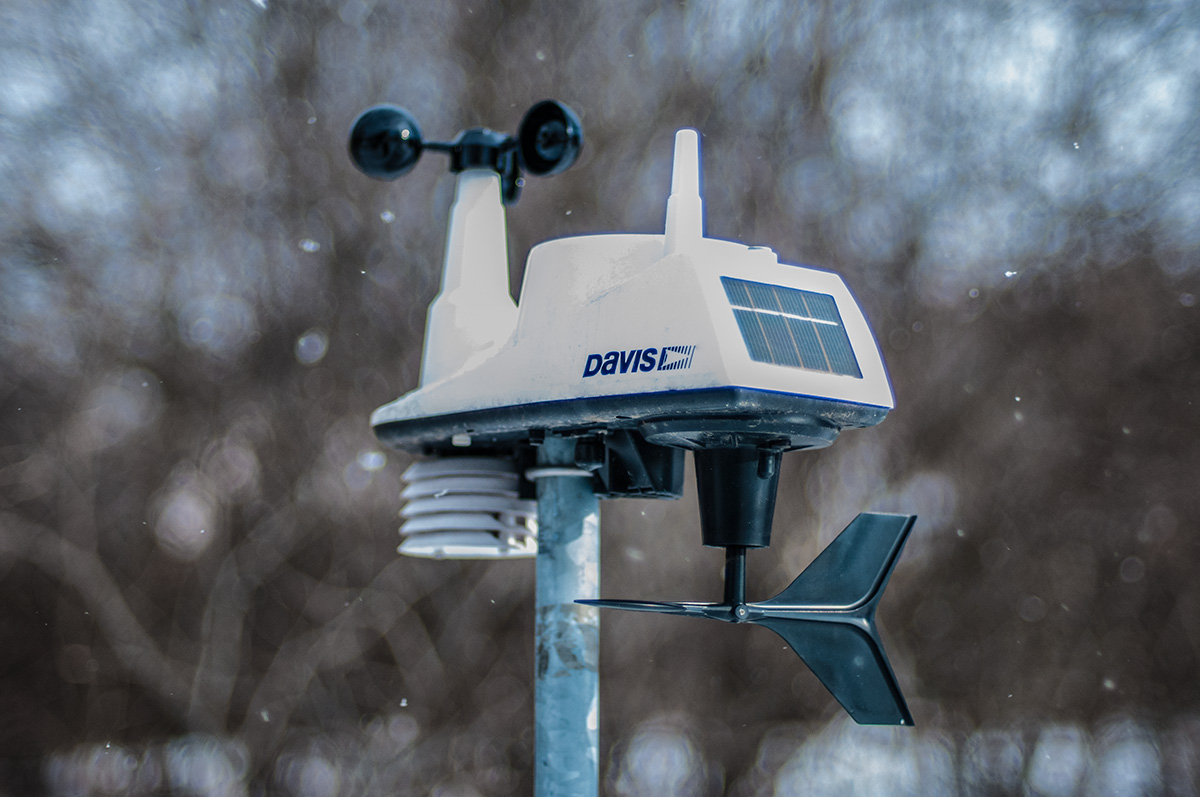
“Everybody complains about the weather but nobody does anything about it,” said Mark Twain, long before the advent of the personal weather station.
You still can’t really do anything about the weather but you can certainly measure it, report about it, collect live weather data and send it to the Internet and display the results all over your house. That’s been my passion over the past 15 years, and I’ll show you how you can do it with your own personal weather station.
Before I give you all the details about gathering weather data and spreading it all over the world (and to my own personal weather site), let me explain why I do it. I’ve been an avid runner and walker for the past quarter of a century, and I always want to know precisely what it’s going to be like when I step outside the door. Beyond that, I’m fascinated with data, graphs, hyper-local websites and weather in general. And, I’d like to volunteer to provide this information to my beloved neighbors.
Adding to the joy of gathering weather data is being a part of a worldwide network of personal weather station owners. Aided by today’s hyper-connectivity, it’s a snap to send live weather data to the Internet that can be displayed every three seconds on any computer on the planet.
Because of this connectivity, everyone in my neighborhood can find out the exact temperature, humidity, wind speed and direction, rainfall amounts, high and low temperatures for the day and dozens of other data points with a single click. It’s hyper-local data that’s also aggregated on a worldwide scale.
 How do I gather this data? It all starts with a weather station I have mounted on a sturdy tripod in my backyard. The station gets most of its power from a small solar panel on its south-facing side, and a lithium battery keeps it going overnight. It wirelessly sends its data to a console inside my house, which is attached to a small USB dongle that plugs into an old laptop I use specifically for gathering and disseminating this data.
How do I gather this data? It all starts with a weather station I have mounted on a sturdy tripod in my backyard. The station gets most of its power from a small solar panel on its south-facing side, and a lithium battery keeps it going overnight. It wirelessly sends its data to a console inside my house, which is attached to a small USB dongle that plugs into an old laptop I use specifically for gathering and disseminating this data.
On that laptop is Virtual Weather Station 15.0 software, whose job it is to take all that data and create JPEG graphics that plot points on graphs that show where that data has been over the past hours or days. The software sends that information via FTP to my Tree Tops Weather website about every three minutes.
As a result, you can go to my weather website any hour of the day or night and get an immediate and graphical view of weather conditions right here in my neighborhood. At the same time, that live data I send to Weather Underground is easily accessed on a computer, smartphone or tablet. Also on the site I’ve incorporated forecast data from the National Weather Service, as well as a variety of maps from both the weather service and Weather Underground.
I have a couple of old iPads I now dedicate to displaying this data in strategic points around the house. In addition, the console that relays the data between the weather station and the PC also displays this weather station’s data, and I have another smaller console that shows a subset of that.
Yes, this is exceedingly geeky, but it’s a hobby I’ve had for a long time, and my neighbors here in the Milwaukee area appreciate the information. They don’t constitute an audience on a grand scale, but my little weather site has a group of loyal visitors, many of whom have been visiting the site for more than a decade.
Because I also run our Tree Tops Homeowners Association website here in Germantown, Wisconsin, I place my live “rapid-fire” weather widget on that site as well. Here’s what that widget looks like on the Homeowners Association site:
It took some serious work to create the site, connect everything together and fine-tune all the equipment necessary to deliver weather data online. However, I’ve done this incrementally over many years, and at this point it requires little maintenance. Yes, the financially self-sustaining site practically runs itself.
So what does it take to get into something like this? Besides having a basic love and obsession for data and weather, as well as rudimentary knowledge of HTML and hosting a site, you’ll need a weather station. In the life of my weather site, I’ve gone through three different models.
I started with an Oregon Scientific weather station from the 1990s. It served its purpose for many years, but because it was exposed to the elements for so long, it finally gave out in 2004. At that point I installed a more sophisticated Davis Vantage Pro2 weather station, and that one lasted about seven years.
Currently I’m using a Davis Instruments Vantage Vue wireless weather station ($309.53), which is the company’s latest and best design. So far it has been bulletproof against the harsh elements out here on the frozen tundra of Wisconsin. Receiving the data is a Davis Vantage Vue console-receiver ($163):
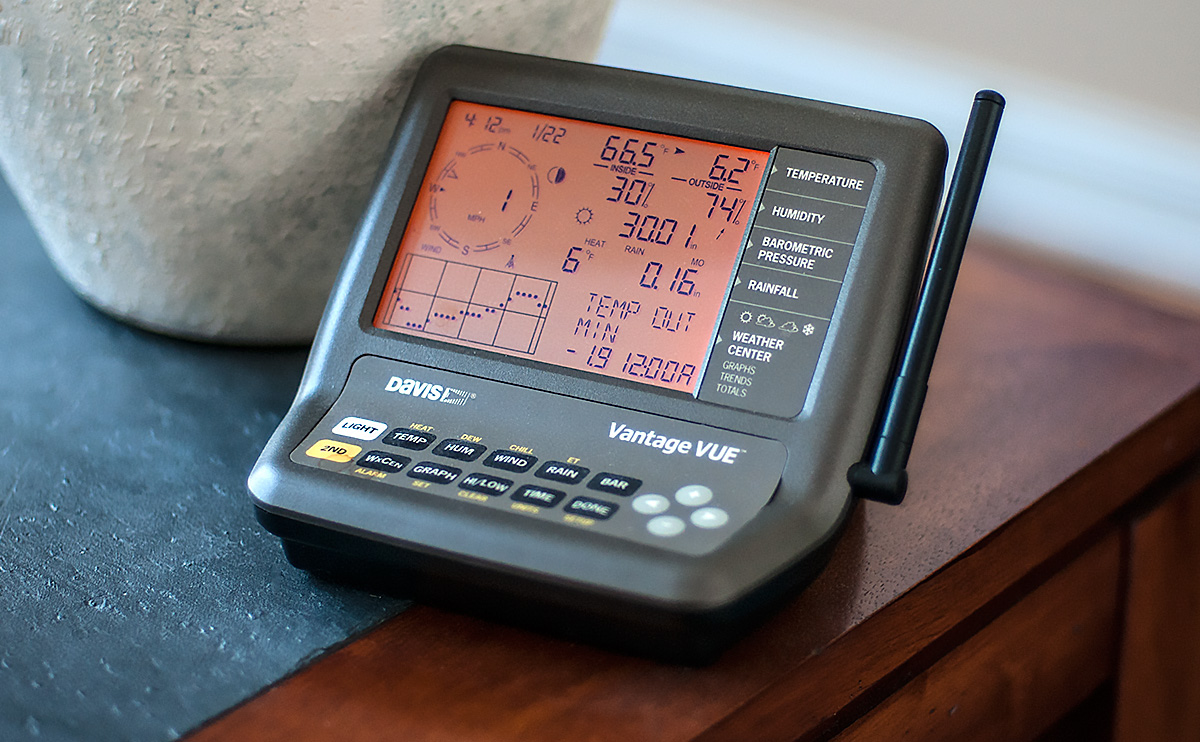
Sending the data to a network-connected laptop is a Vantage Pro2 console-receiver ($232.86, pictured below).
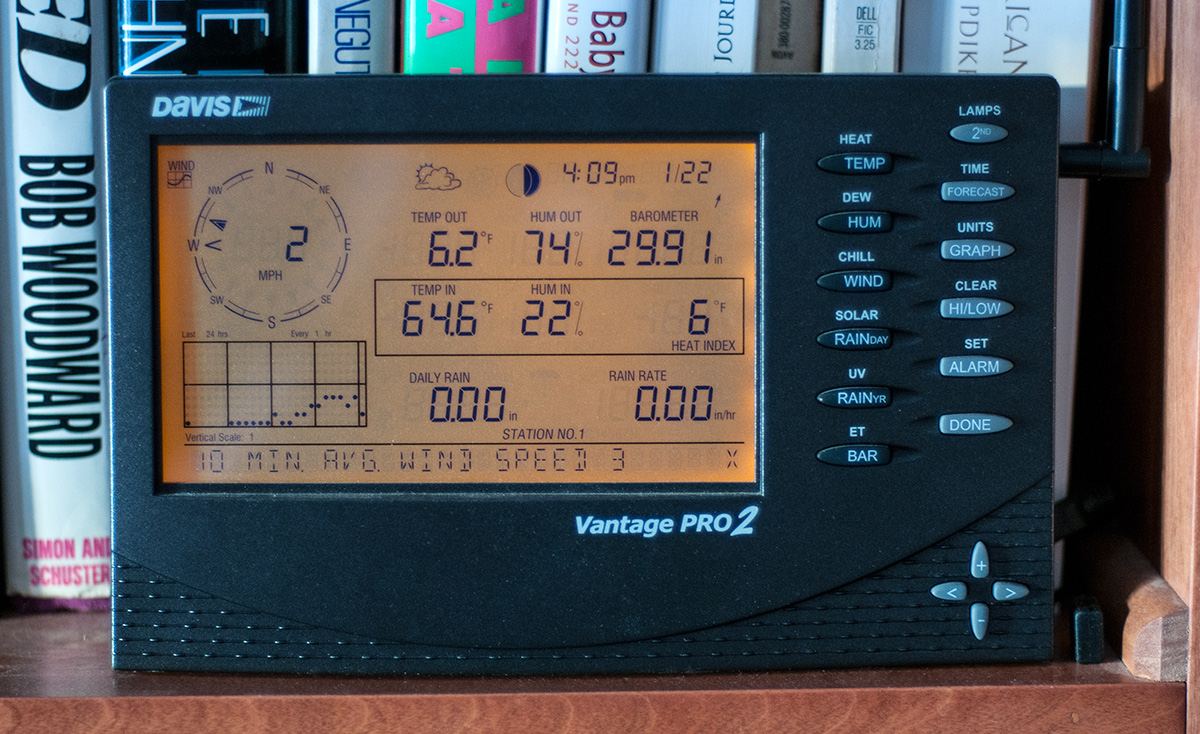
Davis Pro2 console-receiver
Keep in mind, you could use almost any network-connected PC or Mac, including the main computer you use now. It doesn’t take much CPU power or RAM to receive the data, run the Virtual Weather Station software, and send live weather information to the Internet. However, whichever computer you use must be running 24/7. That’s why I picked an energy-efficient laptop for the job.
To interface the data with a laptop, I use Davis Instruments WeatherLink USB Software ($148.50) (or here’s the Mac version), which comes with a little dongle that makes it so I can connect the wireless console to a USB port on the laptop.
Automatically creating the graphics and sending data to my website via FTP, as well as sending “rapid-fire” data to Weather Underground, is ($99.95). Specify the size and parameters of each graphic, and then it automatically FTPs all of them to your website at specified intervals. Place a corresponding code for each graphic in the weather page’s HTML, and the graphics on the page are updated 24/7. Here’s a screenshot of the software:
Add to that equipment list some hardware onto which I mount the weather station in the backyard — a Mounting Tripod ($68.40) and a Mounting Pole Kit ($32.23), and the total price of getting into this weather data generation game totals $1,054. However, you could do without one of those consoles I use, and install a complete Internet-connected station for around $821.
Of course, if you don’t want to connect all your information to the Internet, it’s a lot cheaper. But for me, that’s the most thrilling part.
So there you have it. I know, I know. This is about as geeky as you can get. That’s why I haven’t ever written an article about it in all the years I’ve been working online. It’s borderline obsessive. But those who are interested in weather might find this a rewarding hobby to pursue. Best of all, it provides useful information for anyone who wants it. I see it as a volunteer effort — my chance to perform a public service and give back to the community.
And you know what? It’s fun.
Photos and graphics: Charlie White

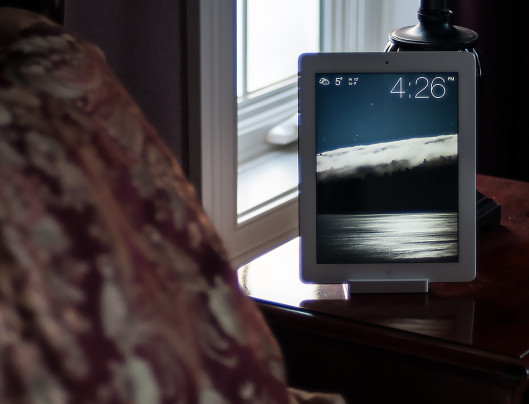

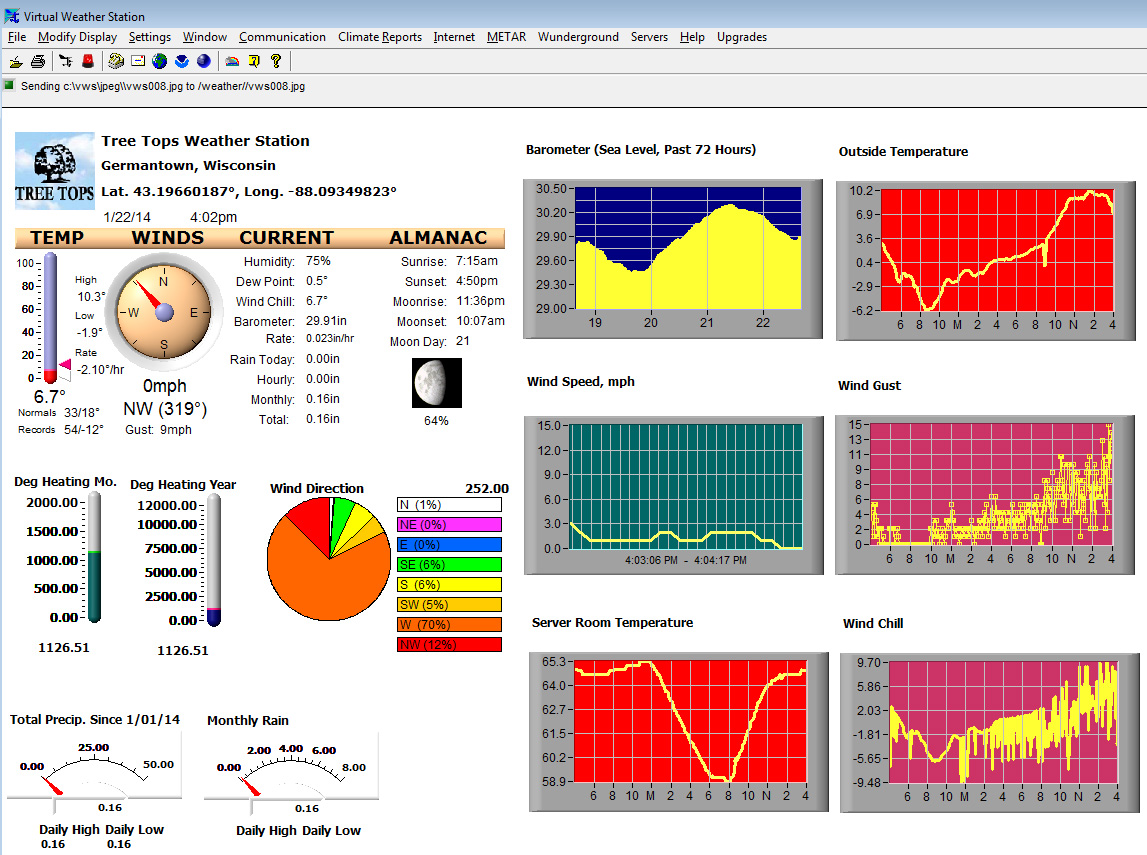
Pingback: I’ve been running my own personal weather station over the past 13 years, and I’d like to show you how it’s done | My Blog
Not obsessive at all! It’s a hobby, and a hobby is supposed to be something you are passionate about! Great job on both the article AND the weather station!
Thanks! It’s fun being a weather geek, just wasn’t sure how it would play on my site here. Appreciate your comment and support.
Pingback: Tu propio sistema de información meteorológica, a tu alcance | FantecnolFantecnol
Pingback: Tu propio sistema de información meteorológica, a tu alcance - Android vs Iphone
Pingback: Tu propio sistema de información meteorológica, a tu alcance
Pingback: Tu propio sistema de información meteorológica, a tu alcance | Los Titulares
Pingback: Tu propio sistema de información meteorológica, a tu alcance | Civeloo News
Pingback: Soynadie Periodismo Urbano » Tu propio sistema de información meteorológica, a tu alcance
Hi, Great article, and awesome hobby! Do you use collected data to somehow predict the wheather in your countryside?
Thanks for your kind words!
I wish I could predict the weather with my data, but I get forecasts from the National Weather Service (NWS). My weather station array collects data like temperature, wind speed, rainfall, humidity and air pressure. I combine that with the NWS forecasts and other weather maps and place it all on my site at charliewhite.net/weather/wx.htm.
I also send that same collected data to Weather Underground, a crowdsourced site that features personal weather stations like mine.
Pingback: Tu propio sistema de información meteorológica, a tu alcance | Jesús Bueno - Ingeniería Informática
Pingback: Zrób to sam – prognoza pogody! AntyWeb
Pingback: Dark Sky weather app lets you animate the polar vortex
Hey Charlie, I noticed you have some bushes/trees there in the picture. Do those give you any problems measuring wind? I’m having a hard time finding a good site in my yard, with all my trees around, and my roof is tooo high for me! Great article. Thanks.
Thanks for your kind comments.
Yes, the surrounding trees and bushes are a major problem with wind speed accuracy. Like you, I considered placing the array on the roof, but that was going to cost several hundred bucks and make it complicated to change the battery once a year.
I’m still thinking about mounting the array to a telescoping pole that I could retract when it’s time for a battery change, but I think that might have to wait. Might need guy wires to keep it standing in strong winds, could be complicated. Not sure if it’s worth it.
Pingback: Weather Station Buildout | Takin' the Backroads